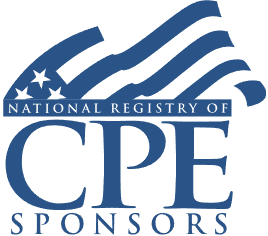Applying Waterfall Allocations: Calculating Standard and Complex Layered and Target Allocations

Course Details
- smart_display Format
On-Demand
- signal_cellular_alt Difficulty Level
Intermediate
- work Practice Area
Tax Preparer
- event Date
Monday, February 24, 2025
- schedule Time
1:00 p.m. ET./10:00 a.m. PT
- timer Program Length
110 minutes
-
BARBRI is a NASBA CPE sponsor and this 110-minute webinar is accredited for 2.0 CPE credits.
-
BARBRI is an IRS-approved continuing education provider offering certified courses for Enrolled Agents (EA) and Tax Return Preparers (RTRP).
This webinar will provide partnership tax practitioners with the tools necessary to interpret and allocate waterfall provisions in partnership operating agreements. This webinar will review the two leading partnership allocation methods used by draftspersons when drafting partnership agreements, and provide hands-on examples of the corresponding calculations of income and loss, distributions, liquidating distributions, and the maintenance of capital accounts by a partner based on each allocation method.
Faculty

Professor Noel P. Brock is an associate professor at Eastern Michigan University where he teaches and researches in all areas of tax law with specific emphasis on business (partnership, corporate and international) taxation. He teaches primarily in the Master of Tax Program. Prior to entering academia in January 2012, he spent over 18 years in private practice—most recently, he was a partner and the partnership tax practice leader in the Washington National Tax Office of Grant Thornton LLP. Prior to joining Grant Thornton LLP, Professor Brock practiced in with international accounting and law firms where he represented clients in transactional tax matters including partnership, international, corporate and financial products transactions. Since entering academia, Professor Brock has remained engaged in practice on a part time basis and is currently a Principal with Holthouse Carlin & Van Trigt LLP.
Professor Brock’s research focuses on business taxation and accounting education. Among the awards he has received since entering academia include being awarded researcher of the year twice. His research has been published in in leading international and national journals, including The Tax Adviser, Journal of Accountancy, Journal of Passthroughs, Journal of International Taxation, Tax Notes, The Journal of Legal Tax Research, Practicing Law Institute, and CCH TAXES, The Tax Magazine, among others. His work been cited by other leading tax professionals and in major tax treatises.
Professor Brock has spoken at international, national and regional tax conferences, including the ABA Section of Taxation, The 67th Annual University of Chicago Federal Tax Conference, District of Columbia Bar, Strafford Publications, A.L.I. CLE, AICPA, Private Equity International, and the Atlanta Tax Forum.
Professor Brock also remains very active in both the AICPA (as former chair and associate member of the Partnership Technical Resource Panel) and the ABA (former chair of and current member of the Partnerships & LLCs Committee, and Member of the Corporate Taxation Committee).

Mr. Chapman brings over 11 years of experience in public accounting with a primary focus on serving clients in the real estate and private equity industries. He provides compliance and consulting services to some of the largest companies in Arizona and supports them through the entire business life-cycle— due diligence and acquisition, operations, refinance and restructure, and disposition. Mr. Chapman has significant experience with the taxation of pass-through entities, including LLCs, partnerships, and S-corporations. He regularly assists clients with complex partnership allocations, basis adjustments, minimum gain, and capital analysis. Mr. Chapman also has experience addressing tax-exempt investor issues including uniform capitalization rules, UBTI analysis, and more. He has modeled tax allocations for partnerships involving more than 600 partners.
Description
Partnership allocations are complex. Yet, there is common language used in partnership agreements (or LLC operating agreements, which are partnership agreements for U.S. Federal tax purposes) that practitioners need to recognize. A partnership agreement may be allocation-based (or layered), where income and loss are allocated based on explicit allocations and accounts are liquidated based on capital account. Alternatively, a partnership agreement may be distribution-based (or targeted) where cash is distributed based on a distribution waterfall and income or loss is allocated in a manner to force each partner's ending capital account balance to equal the cumulative amount of distributions made to each partner over the life of the partnership (thus, requiring the partnership to hypothetically liquidate at the end of each tax year).
Historically, nearly all partnership agreements were allocation-based (or layered). However, since at least the early to mid-1990’s nearly all partnership agreements are distribution-based agreements with target allocations. Identifying specific types of allocations in partnership agreements is not enough. Practitioners must interpret the language and be able to track the required allocations properly so that each partner receives (i) the correct amount of income, and (ii) the correct amount of distributions (cash or otherwise) over the life of the partnership. Nuances in operating agreements can dramatically alter the allocation, distribution, and liquidation requirements.
Listen as our panel of partnership allocation experts walks you through interpreting, calculating, and tracking partnership allocations in partnership agreements (including distribution/target allocations).
Outline
- Statutory and IRS Requirements
- Types of Agreements/Allocations
- Allocation Based/Layered Allocations
- Distribution Based/Target Allocations
- Allocation Examples
- Some Issues with Distribution/Target Allocations
Benefits
The panel will cover these and other critical issues:
- Statutory and IRS requirements for partnership allocations
- Maintaining substantial economic effect under IRC Section 704(b)
- Being able to identify whether an agreement contains layered or target allocations
- How to track allocations under both layered and targeted allocation partnership agreements
- Examples of good and problematic allocation provisions
- The importance of granting override authority in agreements so that partnership allocation provisions function as intended
NASBA Details
Learning Objectives
After completing this course, you will be able to:
- Determine whether partnership allocations are layered or target
- Identify waterfall partnership allocation provisions in partnership agreements
- Decide how granting authority to override partnership allocation provisions helps address allocation issues
- Ascertain whether a target partnership allocation has substantial economic effect
- Understand at a high level what is required to properly track waterfall partnership allocations
- Field of Study: Taxes
- Level of Knowledge: Intermediate
- Advance Preparation: None
- Teaching Method: Seminar/Lecture
- Delivery Method: Group-Internet (via computer)
- Attendance Monitoring Method: Attendance is monitored electronically via a participant's PIN and through a series of attendance verification prompts displayed throughout the program
- Prerequisite: Three years+ business or public firm experience preparing complex tax forms and schedules, supervising other preparers or accountants. Specific knowledge and understanding of pass-through taxation, including taxation of partnerships, S corporations and their respective partners and shareholders.

Strafford Publications, Inc. is registered with the National Association of State Boards of Accountancy (NASBA) as a sponsor of continuing professional education on the National Registry of CPE Sponsors. State boards of Accountancy have final authority on the acceptance of individual courses for CPE Credits. Complaints regarding registered sponsons may be submitted to NASBA through its website: www.nasbaregistry.org.

Strafford is an IRS-approved continuing education provider offering certified courses for Enrolled Agents (EA) and Tax Return Preparers (RTRP).
Unlimited access to premium CLE courses:
- Annual access
- Available live and on-demand
- Best for attorneys and legal professionals
Unlimited access to premium CPE courses.:
- Annual access
- Available live and on-demand
- Best for CPAs and tax professionals
Unlimited access to premium CLE, CPE, Professional Skills and Practice-Ready courses.:
- Annual access
- Available live and on-demand
- Best for legal, accounting, and tax professionals
Unlimited access to Professional Skills and Practice-Ready courses:
- Annual access
- Available on-demand
- Best for new attorneys
Related Courses

Admitting New Partners: Tax Consequences
Friday, May 30, 2025
1:00 p.m. ET./10:00 a.m. PT

Key Issues in Succession Planning: Buy-Sell Agreements, Equity Grants, Profits Interests, Tax Considerations
Tuesday, June 17, 2025
1:00 p.m. ET./10:00 a.m. PT
Recommended Resources
How CPE Can Bridge the Gap Between What You Know and What You Need to Know
- Career Advancement